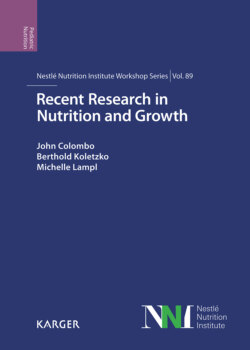Читать книгу Recent Research in Nutrition and Growth - Группа авторов - Страница 19
На сайте Литреса книга снята с продажи.
Timing and Resources
ОглавлениеDietary deficiency or surplus during any of the aforementioned gates may shift metabolic balance and, in turn, alter stage-specific protein expression to attenuate or drive bone elongation. Inadequate resources may affect growth in one of two ways: (1) a reduction in volumetric hypertrophy, leading to decreased saltation amplitude, or (2) a complete loss of a saltatory event. If bone elongation is attenuated entirely, there will be a longer duration between growth saltations or an increased stasis interval. Extended interruption of long-bone elongation is summarized as reduced skeletal growth and shorter stature. Evidentiary bases among animals and humans document the specific importance of protein resources for skeletal growth in associations between both inadequate resources and reduced size [22], and supplementary interventions and increased sizes and advancing skeletal maturation [23]. While the capability of hypertrophic chondrocytes to revert to a prehypertrophic state indicates that there is some flexibility in the timing of saltatory growth events, it is unclear whether the quality of bone from a later “catchup” growth event is equivalent to that of growth in the absence of an insult [24].
Empirical evidence further identifies the importance of energy resources for linear growth from both animal and human studies [23–26]. Dietary interventions after malnutrition identify that weight increases precede skeletal recovery in both rats [24] and humans [25]. Whether this is an accrual of adipose and/or musculoskeletal tissue is a point of current concern [26]. Among normally growing children, weight increases broadly precede times of linear growth [27]. Assessed daily to weekly, weight changes nonlinearly with surges and losses that parallel saltatory growth in length and height [28]. More to the point, perhaps, is the observation that subcutaneous skinfold thickness changes rise and fall with saltatory growth events in length [28]. Of note, such oscillations are not directly necessarily reflected in weight. These lines of evidence suggest the presence of dynamic metabolic negotiations and resource requirements that reflect physiological effects of nutrition during growth. These subtle negotiations are not necessarily captured at the level of weight, signifying the poor sensitivity and specificity of weight as an outcome measure of nutritional efficacy on growth.
